 Palo Alto Stanford Heritage
Palo Alto Stanford Heritage
- Read about Charles Sumner
- List of Charles Sumner's work in Palo Alto and Stanford
Homes on tour:
548 East Crescent Drive ó 1928
This lovely Tudor house was built in 1928 at a cost of $15,000; Henry Post was the contractor. Robert Jones, who worked in real estate and insurance, and his wife Cora, who lived next door at the Sumner–designed Tudor at 530 East Crescent, had Sumner build this house, according to a former occupant, so that no one would build a structure that could block the sun from their rose garden! The two houses remained in the family until 1979, and #548 was sometimes rented, sometimes occupied by a Jones family member for nearly 50 years. According to the present owner, one Jones daughter asked for permission to build the cottage in the back garden for her aging in–law; the Joneses agreed, but stipulated that Sumner be hired to design it.
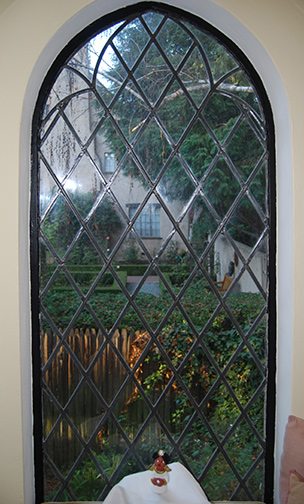
A notable renter, Major General Frank and Gertrude Rowell, lived in the house until 1942–1944. Major General Rowell was one of very few men ever to have received an army commission under the age of 21, joining the army at the age of 18 with four others in September 1898. He rose up through the ranks, served in the Spanish American War and other campaigns, fought in the First World War, and ended his career as commandant of the New York Port of Embarcation.
Robert V. and Cora Jones died a few months apart in 1949, and the property passed to their son Robert S. Jones, an insurance broker like his father, and his wife Muriel. They moved to #548 for a few years, but then lived for the most part at #530. Both houses were sold in 1979. Reynold B. and Beatrice R. Johnson bought #548, and lived there with their family until 2004, when it was purchased by the present owner.
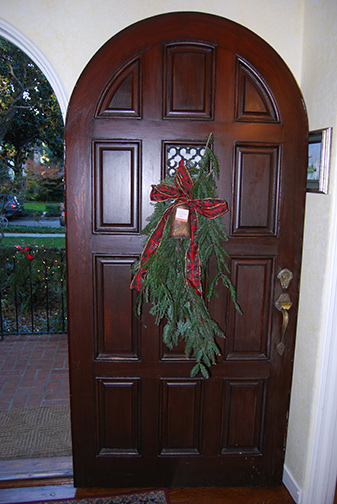
Note the elegantly paneled living room fireplace, and the gracious stair. From the window seat at the stair landing one can see the still–existing rose garden at #530. The sun porch was fashioned into a cozy sitting room by the previous owners. The present owners removed a dark butlerís pantry to enlarge the kitchen to make it more functional for their large family.
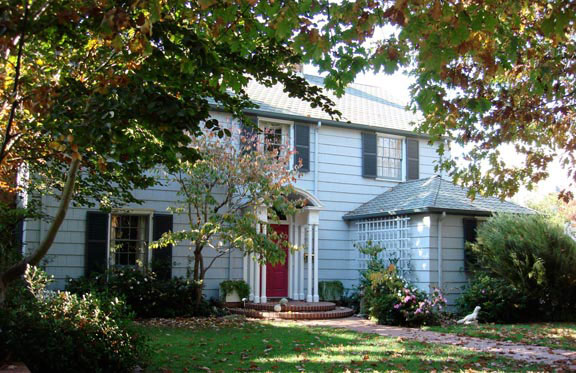
Stanley and Henrietta Pearce moved into their new Federal Revival house in 1933. The builder was E. J. Schmaling, with whom Sumner worked on several occasions. This delicate Federal Revival style house is defined by typical federal details: it is side–gabled with double–hung multi–light windows with shutters, and a pedimented Adam entry porch with fan light over front entry door. Slender columns support the vaulted porch roof.
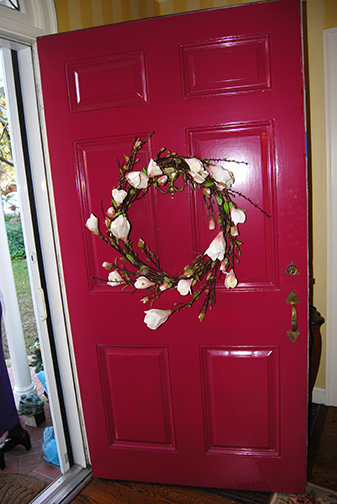
The present owner happened to drive by the house one Friday in 1972; underneath the battleship grey paint inside and out she recognized the wonderful bones of the house. By Saturday she and her husband had purchased it. They reconfigured the butlerís pantry/service porch into a beamed breakfast area, retaining all the original cabinets. They also built a new detached one–car garage utilizing the old kitchen door from the original butlerís pantry as well as shingles from the original two–car garage (demolished). Finally, they added a sunroom which carefully mirrors details of the existing house.
This house contains many elements typical of Sumner houses. There is separation between public, family, and servant spaces; note the street–facing sitting room in front of the kitchen, originally a maidís room, removed from rest of family areas and convenient to the kitchen. Note Sumnerís characteristic built–in corner cupboards in the dining room. The curved stair is said by the owner to be the first that Sumner attempted.
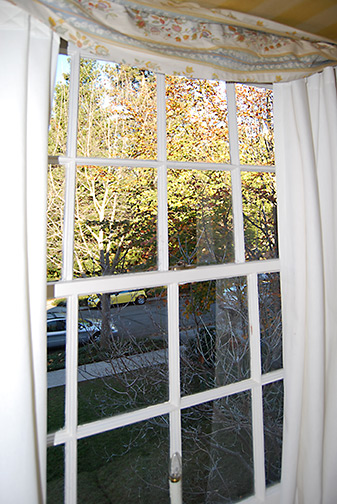
The living room bookshelves are original, save for the molding added to hide lights. Notice the original servantís bellóthere is also one in the master bedroom. The elegant Federal Revival fireplace is decorated with tile hand-painted by the ownerís mother, to cover brick cracked in the Loma Prieta earthquake. The dining room chandelier is original. The chandelier was wired for electricity, but now only used with candles. The master bedroom cabinets and window seat are original, and are a detail often seen in Sumner houses. The owners put in the master bedroom fireplace after Loma Prieta, using the living room fireplace surround as their model.
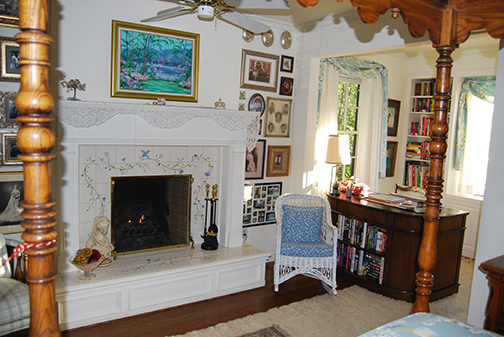
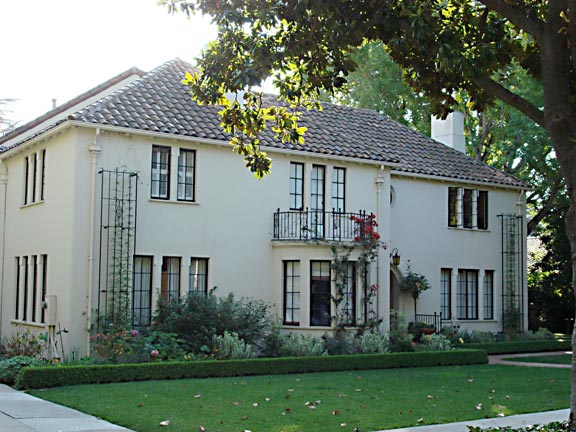
Charles Sumner designed the house on 441 Maple in 1926 for Mr. and Mrs. Thomas Christy; the builder was Frank W. Fox. Mr. Christy was a native of Ireland who settled in Palo Alto in 1907. By 1910 he had founded the Christy–Rhodes Company, a men’s and boys’ clothing store located at 170 University Ave. His wife, Maude, a native Californian, was an avid gardener and active in the Palo Alto Garden Club. In 1971 after Mr. Christy’s death, David J. Bennion, a lawyer, and his wife bought the house and raised their large family there. The third and present owner bought the house in 1998.
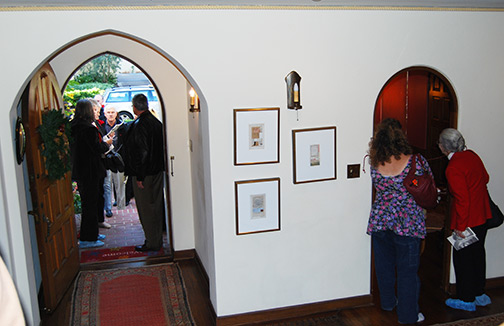
The house itself is Spanish Eclectic in nature with elements of Romanesque architecture: note the simplified Romanesque capitals at the deep windows, reminiscent of those at Stanford quad, and the hipped tile roof. The present owner added the decorative trellises at the front façade during a remodel/master bedroom addition shortly after she bought the house.
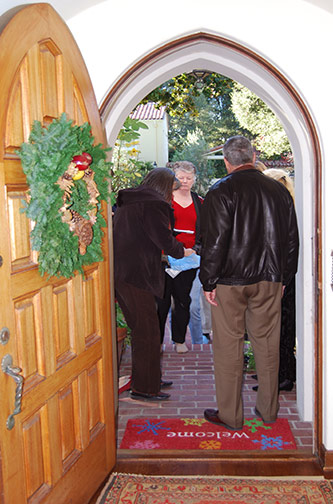
The understated Sumner interiors characteristically feature rich materials. The arched mahogany doors with their original hardware have no casings, a difficult but elegant detail. Note the Deco–influenced railing at stair; the large leaded glass window at the first landing lets light spill down into the entry. The Batchelder tile at the living room fireplace is original, as are the deep mahogany window sills. The dining room has signature Sumner corner cabinets.
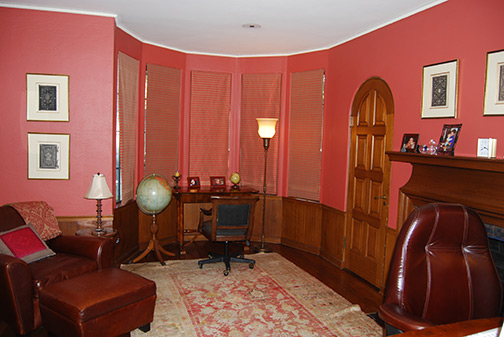
In the kitchen remodel/addition, architect Aino Vieira da Rosa blended new elements with existing, and integrated the new service area, including a new butler’s pantry and laundry, into the existing plan. With white subway tile, an antique Wedgewood stove, and simple yet elegant cabinets, the kitchen complements the period of building. The kitchen and family room have a strong relationship to the garden, for like Mrs. Christy before her, gardening is the present owner’s passion.
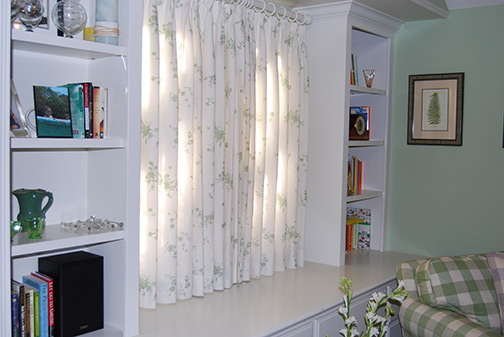
Upstairs are children’s bedrooms as well as the original master bedroom, now a guest suite. Original bathroom fixtures were preserved by both the Bennions and the present owner.
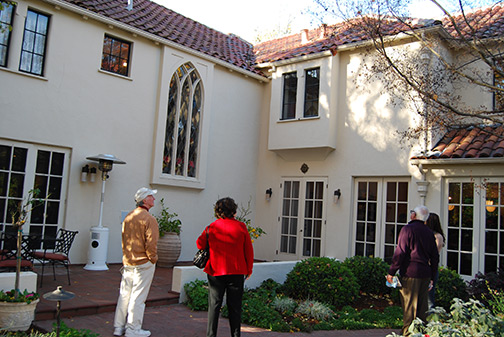
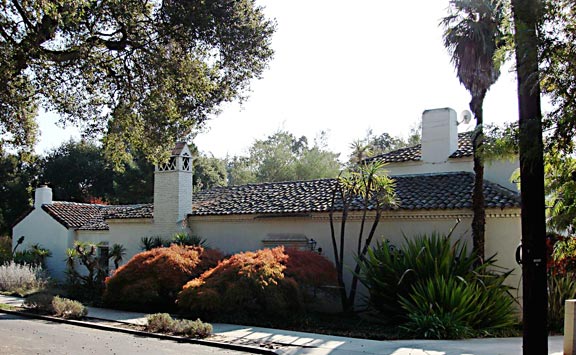
This house, completed in 1935, is one of the most important examples of Spanish Colonial Revival architecture in the city. Its nearly unfenestrated street faÁade and other details adhere closely to their original Spanish models. The structure was built for Leslie Kiler, a significant local landscape architect of the 1920ís and 1930ís. Not only did he design the superb extant garden at his own home, but also the landscape at three Birge Clark–designed homes commissioned by Lucie Stern in the 1900 block of Cowper Street, the Lucie Stern Community Center, and Frost Amphitheater at Stanford University.
Like other influential local tastemakers, such as the de Lemoses and the Merners, Kiler and his wife Crysella Dunker Kiler were intrigued by the gardens and buildings of Spain, and traveled there for a four–month sojourn in the early 1930ís. Interestingly, Crysellaís parents John and Jennie Dunker led the way to the popularity of the Spanish style in Palo Alto, building in 1926 one of the first such residences in town a stoneís throw away at 440 Maple Street (designed by Birge Clark).
1184 Palo Alto Avenue was built in two stages. The Kilers employed Sumner to design the easternmost room, finished in 1931, to serve as a landscape studio for Mr. Kiler. A few years later, they again hired Sumner, this time to design their home (completed 1935) adjacent to the studio. Black & Campbell were the contractors for the studio, and E.J. Schmaling for the house. Kiler installed all the garden paving himself, both brickwork and pebbles.
Note the beautiful woodwork throughout, beginning with the carved front door. The mahogany interior doors, carved beams in the living room, and vaulted, beamed ceiling in the studio are worth special attention. The verandah that runs the length of the living room features exposed eucalyptus beams. The present owner, sensitively refashioned the studio into a kitchen/family room, added a garage, and converted the former garage to bedrooms. Original windows, doors, decorative elements, and the original built-in ironing board were retained.
This splendid Spanish Eclectic house was built for Burt and Camilla Davis in 1926; Ralph Folmer was the contractor. Mr. Davis was a founder of the Pacific Fire Extinguisher Company of San Francisco. Their son, Burt L. Davis, received his M.D. from Stanford University and was a leading physician with the Palo Alto Medical Clinic for 40 years. The Davis family kept the house until the mid–fifties. After a series of short-term occupants and owners, William and Carmen Clemans bought the house in 1974, fashioned a family room out of the attached garage, and added a separate garage structure at the same time. The present owners acquired the house in 2005.
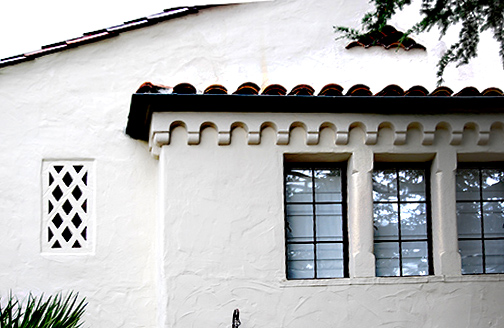
In this house, as at 441 Maple, the use of beautiful materials is especially notable. The doors and living room floors are of Honduran mahogany. The fireplace is an elaborate confection of Batchelder terra–cotta tiles, and the arched windows and doors retain their original curved curtain rods. The stair is surprisingly Modern in its use of chunky squared-off nosings, but incorporates Baroque curves in the railings and treads. Mission-derived features include the terra–cotta tile floor at entry and dining room, the gorgeous 3–inch thick mahogany door, with its carved wavy pattern and over–scaled strapwork hinges, and decorative iron grillwork. The dining room electric chandelier is original.
The kitchen was replaced by the Clemans family, but the present owners painted the dark wood cabinets to lighten the area. They also remodeled the bathrooms, and the master bath, with its original curved ceiling, is especially successful with its marble tiles. They refashioned an awkward upstairs bedroom into two bedrooms and exercise area. The present owners brought almost all their antique 16th and 17th century style furniture with them from their former home, and knew that this was the house for them because it all fit.
The composition of the house facing the back garden and pool is especially successful, with a charming second–floor veranda over the deep arch of the living room door, grille work, and a graceful stair. Note the decorative end cap on the copper gutter.
| |
E-mail us at either webmaster@pastheritage.org or president@pastheritage.org.
![]() Palo Alto Stanford Heritage—Dedicated to the preservation of Palo Alto's historic buildings.
Palo Alto Stanford Heritage—Dedicated to the preservation of Palo Alto's historic buildings.
Copyright © 2015 Palo Alto Stanford Heritage. All rights reserved.